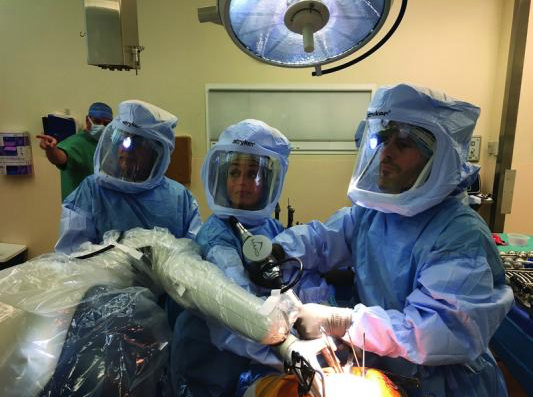 The computerized system, known as the Stryker “Mako” system, is designed for knee and hip replacements. The Mako technology uses three-dimensional planning generated from a CT scan to create a personalized pre-operative plan that is completely individualized for each patient.
The computerized system, known as the Stryker “Mako” system, is designed for knee and hip replacements. The Mako technology uses three-dimensional planning generated from a CT scan to create a personalized pre-operative plan that is completely individualized for each patient.
“This is completely new for our region. It allows for much more accuracy during the surgery,” Gorczynski said. “There are some for whom ‘good enough’ is the goal. Joint replacement can be very forgiving, and many people do very well. But I disagree with the idea of ‘good enough.’ My goal is to make it perfect.”
While any surgery’s outcome has a number of variables, including the rehabilitation process, this technology adds a degree of precision that hasn’t been available before. “The accuracy, Gorczynski said, can be far better than conventional surgery, down to just a millimeter.”
“Take the knee, which has multiple sliding parts and soft tissues. The Mako system allows us to optimize and accurately balance the soft tissues,” Gorczynski said. “The more accurate the balance, the more natural it will feel.”
The Mako robotic device is constantly under the direct command of the surgeon during the procedure. Once the information from the CT scan is uploaded to the computer, and the alignment and position of the prosthesis has been determined, the surgeon then orients the software to the position of the patient’s bones. The robotic arm prevents anything other than the exact plan from being executed, and it does so passively. The robot does not move on its own.
The surgeon positions the tools and prosthesis, and gets real-time information from the computer regarding implant position and soft tissue balance as the operation is happening.
“This is a very sophisticated tool, completely revolutionary in many ways. It’s really very exciting,” Gorczynski said.


